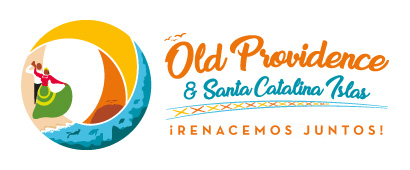Arrival of English conquerors
Historians say that upon the arrival of the English conquerors on the islands, they found a small settlement of Dutch corsairs and evidence that the Miskito Indians, coming from the coasts of Central America, frequently visited them to fish and hunt turtles.
Conquest taken over by Robert Rich
This advanced conqueror took it up again, months later Robert Rich, Second Earl of Warwick, an English nobleman who wanted at all costs to establish a Puritan community in these latitudes, a plan that he set in motion when in 1631 on board the Seaflower he arrived, at Providencia and Santa Catalina, a large group of settlers who initially settled in the area known today as Old Town or Old Town, but in those days baptized as New Westminster.
Conquest taken over by Robert Rich
This advanced conqueror took it up again, months later Robert Rich, Second Earl of Warwick, an English nobleman who wanted at all costs to establish a Puritan community in these latitudes, a plan that he set in motion when in 1631 on board the Seaflower he arrived, at Providencia and Santa Catalina, a large group of settlers who initially settled in the area known today as Old Town or Old Town, but in those days baptized as New Westminster.
Arrival of black slaves from ancestral Africa
The new settlers, who were characterized by their religious fervor, began to plant cotton and tobacco, as well as fruits and vegetables. The workforce was originally developed by the English, but in 1633 it was replaced by that of the black slaves brought from ancestral Africa.
Arrival of black slaves from ancestral Africa
The new settlers, who were characterized by their religious fervor, began to plant cotton and tobacco, as well as fruits and vegetables. The workforce was originally developed by the English, but in 1633 it was replaced by that of the black slaves brought from ancestral Africa.
The Spanish conquered the islands by Admiral Francisco Díaz Pimienta.
His fleet consisted of seven ships carrying about 2,500 men, including soldiers, sailors and gunners. Since then, and for 36 years, the dominion over the islands passed from the Spanish hands to the English and even to the Dutch.
The Spanish conquered the islands by Admiral Francisco Díaz Pimienta.
His fleet consisted of seven ships carrying about 2,500 men, including soldiers, sailors and gunners. Since then, and for 36 years, the dominion over the islands passed from the Spanish hands to the English and even to the Dutch.
Pirate Henry Morgan took the islands
The pirate Henry Morgan, who had already visited the islands in 1666, took Providence, attacked Panama and sacked Santa Marta.
The French navigator Louis Michel Aury arrived on the islands
At the beginning of the 19th century, when the continent was experiencing an intense struggle against the Spanish people for the independence of Colombia, which was proclaimed on July 20, 1810, but which materialized on August 7, 1819, however, it was not the continental territory the first to consolidate the emancipation, in July 1818 to the coasts of Providencia and Santa Catalina came the French navigator Louis Michel Aury, who despite his differences with Simón Bolívar joined the liberating feat. Aury turned the islands into his base of operations and into the first liberated territory of New Granada.
The French navigator Louis Michel Aury arrived on the islands
At the beginning of the 19th century, when the continent was experiencing an intense struggle against the Spanish people for the independence of Colombia, which was proclaimed on July 20, 1810, but which materialized on August 7, 1819, however, it was not the continental territory the first to consolidate the emancipation, in July 1818 to the coasts of Providencia and Santa Catalina came the French navigator Louis Michel Aury, who despite his differences with Simón Bolívar joined the liberating feat. Aury turned the islands into his base of operations and into the first liberated territory of New Granada.
The Council of the islands decide to adhere to the Constitution of Cúcuta
On June 23, 1822, the council of Providencia and Santa Catalina decided that the islands voluntarily adhered to the Constitution of Cúcuta, magna carta of the New Republic of Gran Colombia.
The archipelago was called free port
a fact that caused a great emigration from the continent, a phenomenon that affected the insular life, especially that of San Andrés.
We are your best destination
Providencia and Santa Catalina are the paradise of the Caribbean thanks to the fact that the raizal community that lives in them has managed to enter into the dynamics of sustainable tourism and development, thus guaranteeing a friendly process with nature.

